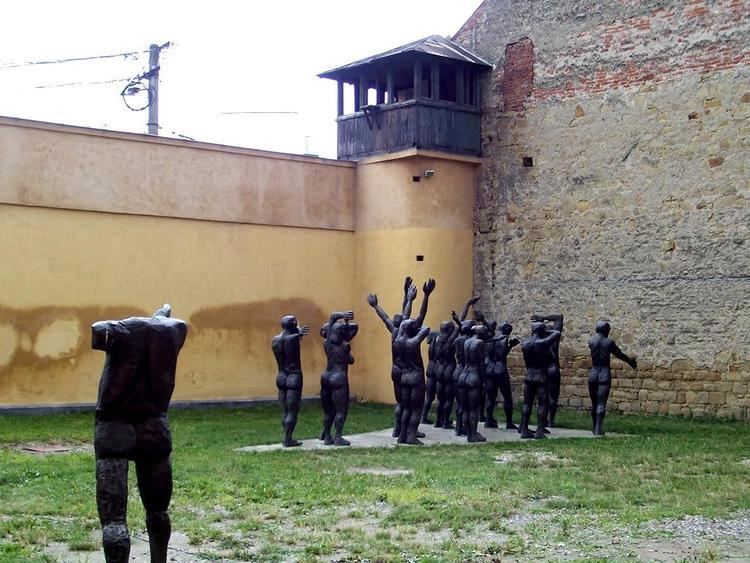 | ||
The Pitești prison (Romanian: Închisoarea Pitești) was a penal facility in Pitești, Romania, best remembered for the reeducation experiments (also known as Experimentul Pitești – the "Pitești Experiment" or Fenomenul Pitești – the "Pitești Phenomenon") carried out between December 1949 and September 1951, during Communist party rule. The experiment, implemented by a group of prisoners under the guidance of the prison administration, was designed as an attempt at violently "reeducating" the mostly young political prisoners, primarily supporters of the ultra-nationalist Iron Guard, as well as former members of the National Peasants' and National Liberal parties or Zionist members of the Romanian Jewish community. Religious inmates also included Christian seminarians. The experiment's goal was for prisoners to discard past political and religious convictions, and, eventually, to alter their personalities to the point of absolute obedience. Estimates for the total number of people passed through the experiment range from up to 1,000 to 5,000. The "experiment" was stopped at the government's intervention and the overseers were put under trial; while twenty of the participating prisoners were sentenced to death, prison officials were handed down light sentences.
Contents
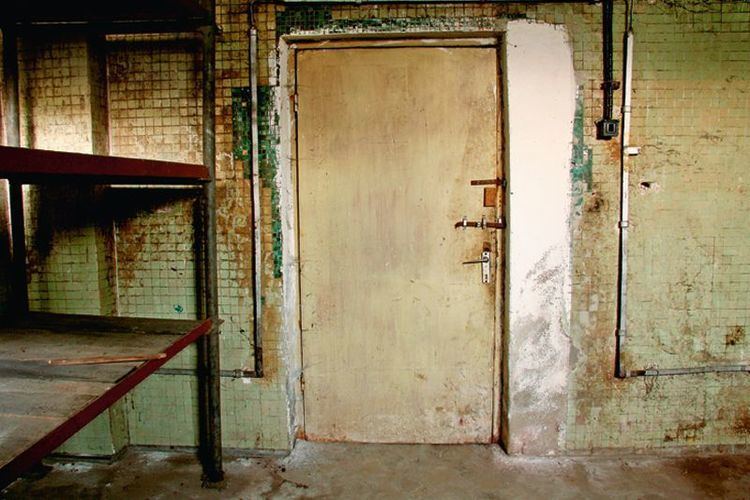
Journalist and anti-communist activist Virgil Ierunca referred to the "reeducation experiment" as the largest and most intensive brainwashing torture program in the Eastern Bloc. In even stronger terms, Nobel Laureate and gulag survivor Alexander Solzhenitsyn called it "the most terrible act of barbarism in the contemporary world."

Beginnings
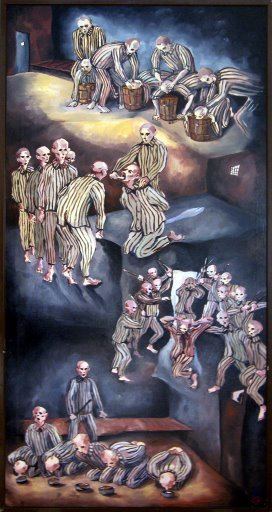
The prison itself was built at an earlier stage. Work on it had begun in the late 1930s, under King Carol II, and had been completed during Ion Antonescu's rule (see Romania during World War II). The first political prisoners it housed arrived in 1942; these were high school students suspected of having taken part in the Legionnaires' rebellion. For a while after the proclamation of a Romanian People's Republic, it continued to house primarily those found guilty of misdemeanors.
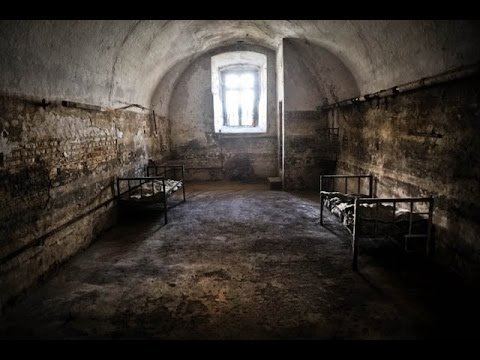
Early attempts at "reeducation" had occurred at the prison in Suceava, continuing in a violent manner in Pitești and, less violently, in Gherla prison. The group of overseers had been formed from people who had themselves been arrested and found guilty of political crimes. Their leader, Eugen Țurcanu, a prisoner and former member of the Iron Guard, who had also shortly joined the Communist Party before being purged, dissatisfied with the progress in Suceava, proposed using violent means in order to enhance the process, obtaining the agreement of the Pitești prison administration. Ţurcanu, who was probably acting on the orders of Securitate deputy chief Alexandru Nikolski, selected a tight unit of reeducation survivors as his assistants in carrying out political tasks. This group was called the Organizaţia Deţinuţilor cu Convingeri Comuniste (ODCC, "Organization of Convinced Communist Detainees"), and included the future Orthodox priest and dissident Gheorghe Calciu-Dumitreasa and the Jewish Petrică Fux.
Stages of "reeducation"
The process begun after that date involved psychological punishment (mainly through humiliation) and physical torture.
Detainees, who were subject to regular and severe beatings, were also required to engage in torturing each other, with the goal of discouraging past loyalties. Guards would force them to attend scheduled or ad-hoc political instruction sessions, on topics such as dialectical materialism and Joseph Stalin's History of the CPSU(B) Short Course, usually accompanied by random violence and encouraged delation (demascare, lit. "unmasking") for various real or invented misdemeanors.
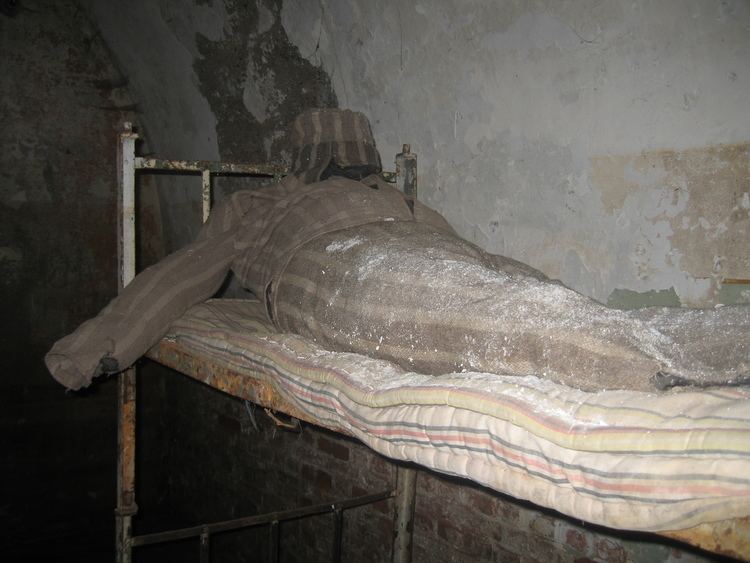
Each subject of the experiment was initially thoroughly interrogated, with torture applied as a mean to expose intimate details of his life ("external unmasking"). Hence, they were required to reveal everything they were thought to have hidden from previous interrogations; hoping to escape torture, many prisoners would confess imaginary misdeeds. The second phase, "internal unmasking", required the tortured to reveal the names of those who had behaved less brutal or somewhat indulgently towards them in detention.
Public humiliation was also enforced, usually at the third stage ("public moral unmasking"), inmates were forced to denounce all their personal beliefs, loyalties, and values. Notably, religious inmates had to blaspheme religious symbols and sacred texts. According to Virgil Ierunca—anti-communist activist and member of the Presidential Commission for the Study of the Communist Dictatorship in Romania—Christian baptism was gruesomely mocked. Guards chanted baptismal rites as buckets of urine and fecal matter were brought to inmates. The inmate's head was pushed into the raw sewage. His head would remain submerged almost to the point of death. The head was then raised, the inmate allowed to breathe, only to have his head pushed back into the sewage. Ierunca further states that "prisoners' whole bodies were burned with cigarettes; their buttocks would begin to rot, and their skin fell off as though they suffered from leprosy. Others were forced to swallow spoons of excrement, and when they threw it back up, they were forced to eat their own vomit." The inmates were required to accept the notion that their own family members had various criminal and grotesque features; they were required to author false autobiographies, comprising accounts of deviant behavior.
In addition to physical violence, inmates subject to "reeducation" were supposed to work for exhausting periods in humiliating jobs (for example, cleaning the floor with a rag clenched between the teeth). Inmates were malnourished and kept in degrading and unsanitary conditions.
Historian Adrian Cioroianu argued that techniques used by the ODCC were ultimately derived from Anton Makarenko's controversial pedagogy and penology principles in respect to rehabilitation.
The prison also ensured a preliminary selection for the labor camps at the Danube-Black Sea Canal, Ocnele Mari, and other sites, where squads of former inmates were supposed to extend the experiment.
Ending and legacy
In 1952, as Gheorghe Gheorghiu-Dej successfully maneuvered against the Minister of the Interior Teohari Georgescu, the process was stopped by the authorities themselves. The ODCC secretly faced trial for abuse, and over twenty death sentences were handed out (Ţurcanu was held responsible for the murder of 30 prisoners, and the abuse exercised on 780 others); Securitate officials who had overseen the experiment, including Colonel Teodor Sepeanu, were tried the following year; all were given light sentences, and were freed soon after. Responding to new ideological guidelines, the court concluded that the experiment had been the result of successful infiltration of American and Horia Sima's Iron Guard agents into the Securitate, with the goal of discrediting Romanian law enforcement.
Abandoned and partially in ruin, the building was sold to a construction firm in 1991 (after the Revolution of 1989; several of the facilities have either been torn down or suffered major changes). A memorial was built in front of the prison's entrance.
According to the Romanian historian Mircea Stanescu, tens of people died in the "Pitești experiment", but its aim was not to kill the people, but to "reeducate" them.
